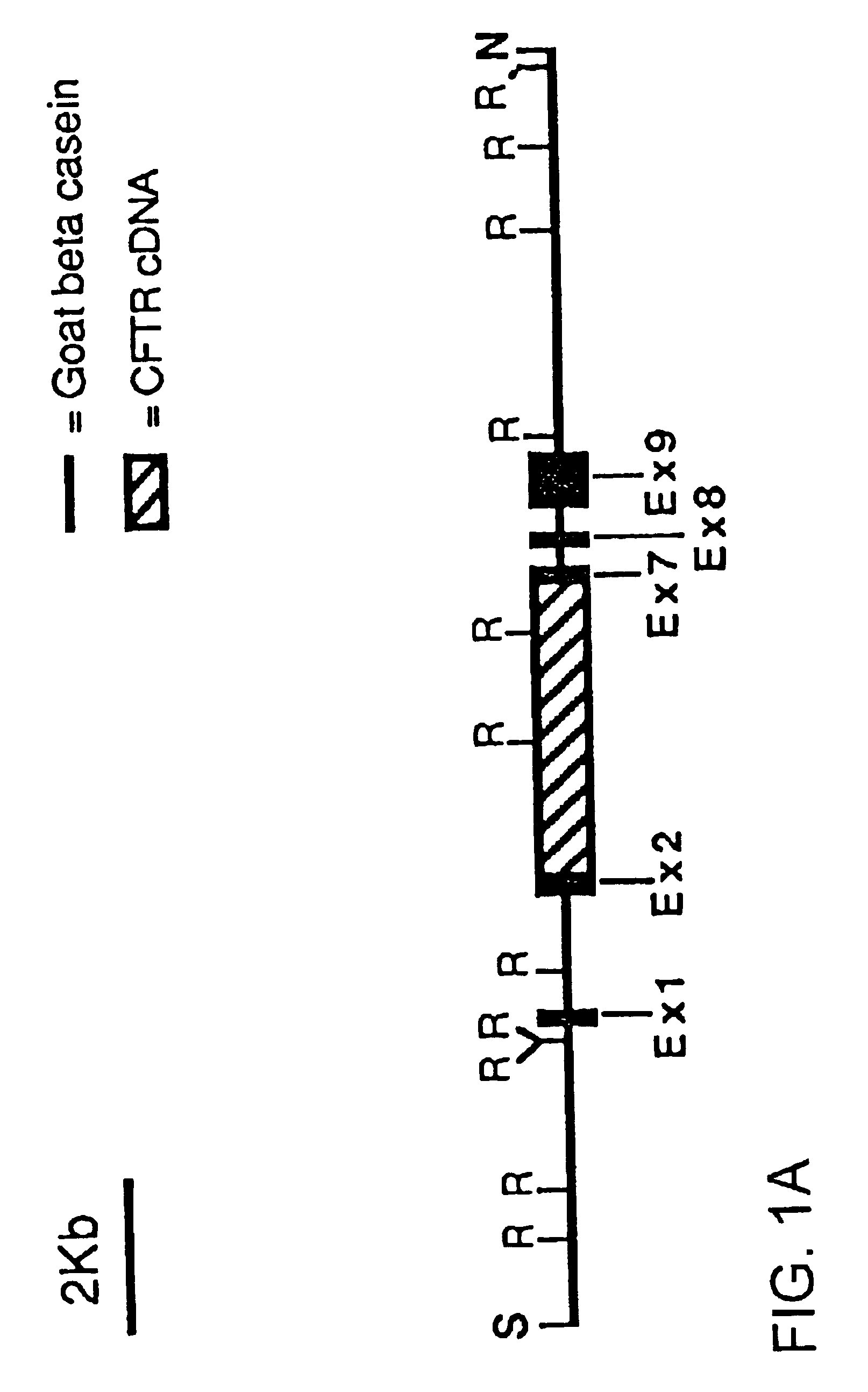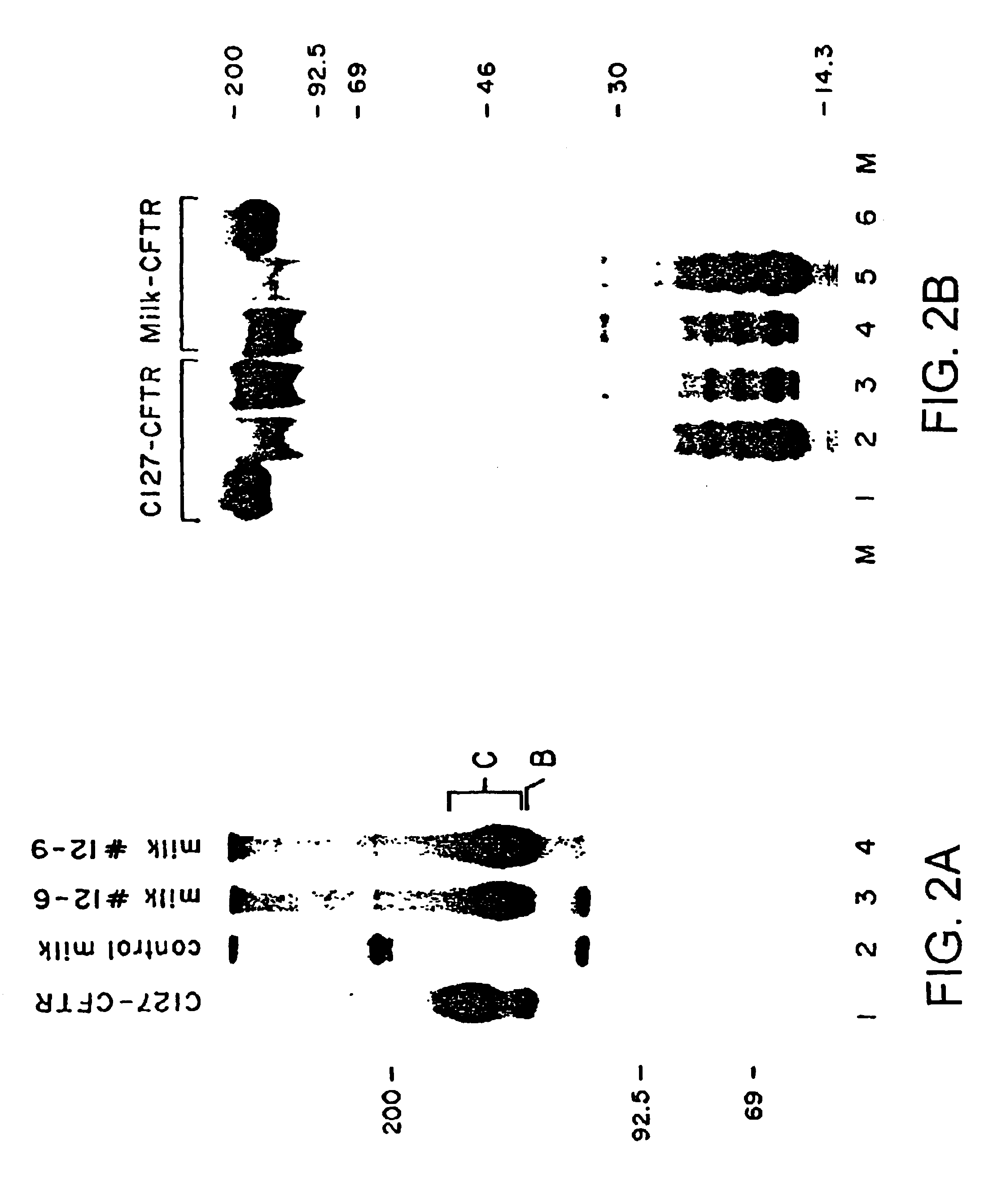Production of membrane proteins in the milk of transgenic mammals
a technology of membrane proteins and mammals, which is applied in the field of transgenic mammals' milk production of membrane proteins, can solve the problems of considerably longer time period required for such animals' developmen
- Summary
- Abstract
- Description
- Claims
- Application Information
AI Technical Summary
Benefits of technology
Problems solved by technology
Method used
Image
Examples
Embodiment Construction
The 17.8 Kb DNA construct used to produce transgenic mice capable of secreting CFTR in their milk is shown in FIG. 1A. It consists of a full length copy of CFTR cDNA (containing a point mutation at residue 936 to inactivate an internal cryptic bacterial promoter that otherwise renders the cDNA unstable.sup.15 ) inserted between exons 2 and 7 of the goat .beta.-casein gene. The .beta.-casein gene contains a mammary gland specific promoter which results in expression of the desired gene, e.g. CFTR or other membrane protein, within the mammary gland. Other milk specific promoters which may be used in substitution include well known promoters such as .varies.-casein, whey acid protein and .beta.-lactoglobulin promoters. Most preferred constructs will include one or more enhancer elements typically associated with such genes as has been described previously in the art. Such promoters / enhancers are then associated with the coding sequence of the membrane protein of interest using conventi...
PUM
| Property | Measurement | Unit |
|---|---|---|
| volume | aaaaa | aaaaa |
| whey acid protein | aaaaa | aaaaa |
| conductance | aaaaa | aaaaa |
Abstract
Description
Claims
Application Information
 Login to View More
Login to View More - R&D
- Intellectual Property
- Life Sciences
- Materials
- Tech Scout
- Unparalleled Data Quality
- Higher Quality Content
- 60% Fewer Hallucinations
Browse by: Latest US Patents, China's latest patents, Technical Efficacy Thesaurus, Application Domain, Technology Topic, Popular Technical Reports.
© 2025 PatSnap. All rights reserved.Legal|Privacy policy|Modern Slavery Act Transparency Statement|Sitemap|About US| Contact US: help@patsnap.com



